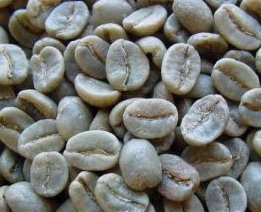Why Roast Your Own Coffee?
Roasting your own beans is easy and fun. If you’re new to home roasting, you will soon be experiencing the best coffee you have ever tasted – for about ½ the price of store-bought roasted beans! Once roasted, coffee beans retain their maximum flavor for about three days. During this period the beans are degassing – giving off C02. As the gas leaves the bean, it prevents oxygen from reaching the bean. Oxygen is what causes the beans to go stale. As you walk the coffee aisles of a grocery store, you smell the aroma coming from the roasted coffee beans. While it is a pleasant coffee fragrance, what you smell is the freshness leaving the beans!
Roasting Basics
First, a word about home roasting: Roasting your own coffee can be accomplished in a wide variety of ways. The simplest (but not the easiest, by any means!) is to roast the beans in a hot frying pan while constantly stirring them to prevent scorching. No kidding! Then there are air roasters, drum roasters, and heck, if you search the web enough you can even find a guy that gives instructions on how to convert a barbeque into a roaster.
If you purchase one of the roasters offered by The Lost Dutchman Coffee Co., please make sure to read and follow the roasting instructions that come with the roaster.
Green coffee beans can be roasted to various degrees. Which one is best depends on: personal preference, type of brewing method (drip, espresso, press-pot, etc.), and coffee bean type. By experimenting, you can determine your own likings.

Roasting The Beans
- During the first part of the roast, not much happens. The beans start to turn yellowish and give off a grassy-type smell.
- The beans will start giving off steam as the moisture inside the beans “cooks off”. Roasted beans generally lose 20-30 percent of their pre-roasted weight. This is due to loss of water content during roasting. The darker the roast, the lighter the roasted bean will weigh.
- The smell gradually becomes more like the coffee aroma that you are used to. At this point, “first crack” occurs. What happens is that moisture inside the beans expands because of the intense heat and blows off the outer skin, creating “chaff” (your roaster has a chaff collector which will trap most of this). First crack refers to the period of time when you first hear one of the beans give off a distinctive crack, until the other beans finish making a similar cracking sound. This can be anywhere from a minute to several minutes depending on the roaster used, the amount of beans in the roaster, roaster temps, etc. The sound of First Crack can be characterized as the sound of pencils breaking (kind of a dull, low pitched thud).
- Anytime after First Crack, the roast can be considered complete. However most people would probably prefer to wait a while longer.
- Oils migrate from deep inside the bean to the outside. The beans expand and darken in color.
- Second Crack occurs. Depending on the roaster, the beans, and the temperature, First and Second Crack can overlap. Second Crack usually is characterized by a “more violent” and rapid cracking sound. It sounds like toothpicks breaking (sharp snap).
- Roast becomes darker and darker, giving off more smoke. The beans appear shiny from the oils.
- Oils burn off; beans have given off all their moisture and turn to carbon. If roast continues, a fire can occur. Fortunately, most roasters sold today prevent over-roasting to this degree (a person could still do it if they really try hard though).
After roasting, the beans need time to degas. This is best accomplished by placing them in a container for anywhere from four to twelve hours before use. Of course, if you’re out of roasted beans and need to drink coffee now, then by all means, grind it up and brew it now! It will still taste great!
Commercial specialty coffee roasters use a technique called “profile roasting“. This method controls the temperature during the roast to achieve a desired finished bean (flavor and taste). Profile roasting is particularly useful if a light roast is desired. This is because there is a risk of winding up with some under-roasted beans in the batch due to non-uniformity of the overall roast. By profiling, the roasting temperature can be reduced, and the roast time lengthened. The result is a more uniform roast, thus minimizing the risk of having under-roasted beans in the batch which create a rather nasty cup of grassiness-taste. This is but one example of a good use of profile-roasting. Other “profiles” are thought to create different characteristics using the same beans. The Hearthware i-Roast we offer has a profile roast feature that allows the home roasting enthusiast a certain degree of roast profiling control.
See the section of Roast Level Terminology for descriptions and images of beans roasted to different degrees.
